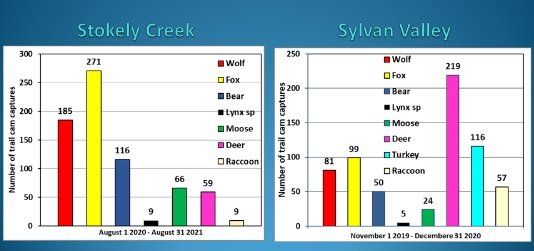Wildlife Research Project
Wildlife Watch: Unravelling the Secrets of the Forest
The natural world is nothing short of inspiring, and that is something we are constantly reminded of as we reflect upon our trail camera footage. Operating 24/7 throughout our five research sites, our trail cameras have captured thousands of images which play a significant role in understanding the behaviour of species that cross our lenses.
Compared to direct, field based observations, trail cameras offer non-invasive data collection with little disruption to the rhythm of the natural world. These types of observations can increase our understanding of occurrence, abundance and reproductive behaviour among wildlife. This data, in conjunction with the ability to carry out multiple studies simultaneously, enables us to analyse animal behaviour alongside other parameters, such as human activity, providing insight into processes such as habitat distribution and activity patterns.
Trail camera footage provides a unique opportunity to observe wildlife with little disruption.
Trail cameras in our study are deployed in a hybrid experimental design, providing continuous year-round monitoring of wildlife, focusing specifically on areas which contain a variety of man-made features, including high-voltage transmission line corridors, forest roads, and other randomly selected forest sites. To date, we have incurred tens of thousands of unique observations with species ranging from moose, bear, bobcat, coyotes and wolves.
Tens of thousands of observations mean a lot of data, which equates to A LOT of time spent manually identifying and cataloging material- a task that isn’t always logistically feasible. With that in mind, we have partnered with OMNRF and the University of Guelph to maximize the efficiency of camera trapping studies through a system of artificial intelligence algorithms capable of automating wildlife identification. Drawing from our accumulated preliminary trail camera footage, we developed a validated image library of more than 13,500 catalogued images which will be used to train and validate this artificial identification system and optimize it for our study objectives.
The future rollout of this validated AI system will significantly accelerate our ability to synthesize data akin to what is shown in our preliminary camera trapping data. As shown in the image below, preliminary results depict comparative data for two of our study areas and document numerous instances of multiple species in each area.

Preliminary data indicates a number of species can be found throughout our study sites.
Canid species (including both grey wolf and coyote) were common among the observations in both sites. Black bear, fox, bobcat, lynx, grouse, moose, deer, elk, raven, crow, raccoon and even an occasional otter were also recorded by the trail cameras in the preliminary study effort. As we continue to document the occurrence and frequency of wildlife we observe throughout our research areas in the southern Algoma district, we look forward to sharing more data like this and describing how wildlife detections may vary, across seasons and years.
Our project is made possible thanks to a passionate group of volunteers and strong collaborative partners.
You can learn more about our partners here.



